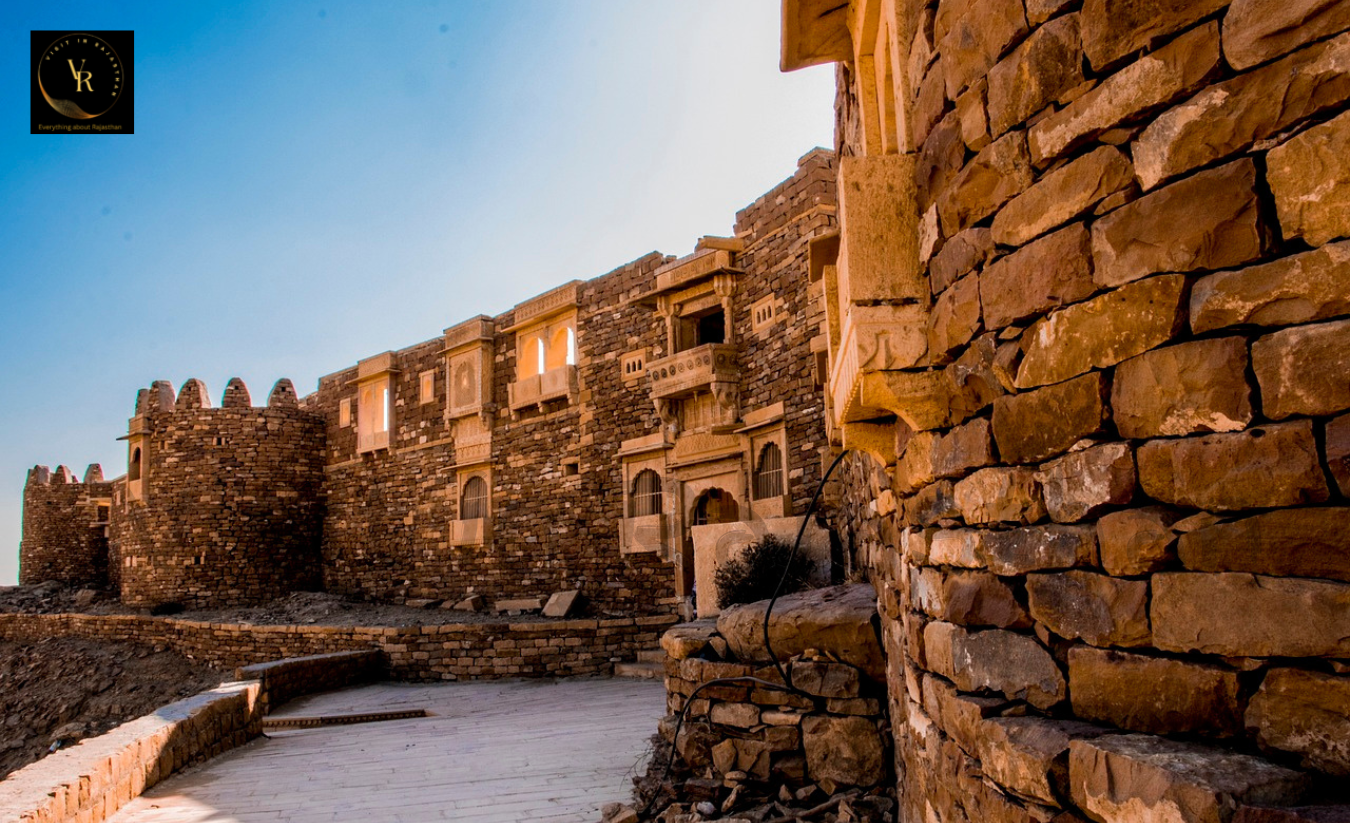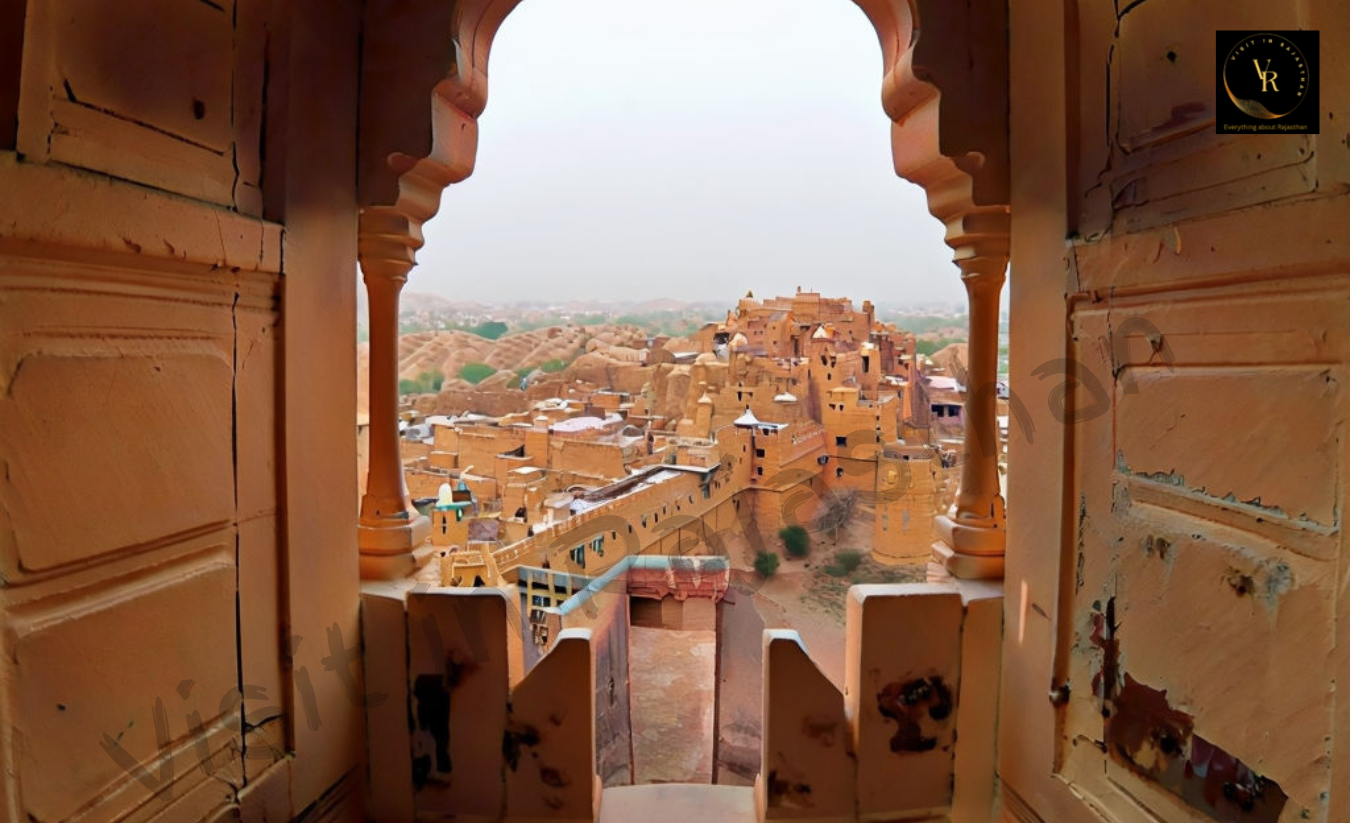The Sonar Quila or the Golden Fort, additionally known as Jaisalmer Fort is tucked between the yellow sand dunes of Thar Desert in Rajasthan, India; it reflects a wealthy ancient beyond and architectural brilliance.This UNESCO World Heritage Site is not just an example of Rajput architecture at its best but also a living fort with a buzzling life and culture. In this text, we will delve into the records, structure, tradition, and importance of Jaisalmer Fort, presenting a comprehensive evaluation of this majestic shape.

A Glimpse into History
The Bhati clan’s leader, Rawal Jaisal foundered Jaisalmer Fort in 1156. There exists a native fable that suggests it was built on advice from an old sage who foresaw that a city would one day grow up around what is now known as Jaisalmer fort. This decision marked the beginning of Jaisalmer as a prominent exchange middle on the historic Silk Route, connecting India to diverse regions of the Middle East and Europe.
The fortress performed a important function inside the prosperity of Jaisalmer, because it became strategically located to facilitate exchange in valuable goods which include silk, spices, and valuable stones. It is said that the wealth accrued thru trade made Jaisalmer one of the richest cities inside the area during its top. However, with converting trade routes, the fort’s significance declined, and it saw a discounted population over the years. Today, it stands as an brand of Rajasthan’s superb background.
Architectural Marvel
Jaisalmer Fort is renowned for its unique architecture, proposing yellow sandstone that gives it a heat golden hue, especially beautiful all through sundown. The citadel’s large fortifications stretch throughout 250 acres, surrounded through 99 bastions, many of which date again to the fifteenth and 16th centuries. The fortress is one of the few dwelling forts within the international, with a bustling population dwelling inside its partitions, consisting of shops, houses, and temples.
Fortifications and Design
The citadel’s architectural layout is characterized through tricky ornate carvings, beautifully decorated balconies, and finely crafted facades. The front to the fortress is thru the wonderful Gadisar Gate, which leads traffic into a global of stunning havelis (conventional mansions), temples, and slender winding lanes.
One of the most great structures inside the citadel is the Jain Temple, devoted to the Tirthankaras, which showcases outstanding marble sculptures and problematic ceilings. The mixture of Hindu and Jain affects inside the fortress’s architecture is a testament to the cultural syncretism of the vicinity.
Key Attractions within the Fort
Rani Ka Mahal
Once the house of the queen, this palace boasts wonderful courtyards and balconies, supplying a glimpse into royal existence.
Raj Mahal
This is the royal own family’s former residence, characterised with the aid of its regal structure and breathtaking views of the metropolis and surrounding wilderness.
Jain Temples
A cluster of beautiful Jain temples built at some point of the twelfth to 15th centuries, recognised for his or her problematic carvings and ancient importance.
Laxminath Temple
A distinguished temple devoted to Lord Vishnu and Goddess Laxmi, presenting superb architecture.
Patwon Ki Haveli
However close to the fort but this five-storey mansion has become an amazing marvel worth visiting. The largest haveli in Jaisalmer, adorned with beautiful carvings
The Living Fort
What truly sets Jaisalmer Fort aside is its repute as a residing citadel. One thing that sets aside Jaisalmer Fort from other ancient forts across India and even beyond is that it’s not abandoned. Inside there are many shops run by shopkeepers, artisans, and residents while selling various types of handicrafts, textiles and souvenirs allowing visitors to take home some part of Jaisalmer’s culture.

The fortress’s slender lanes are full of local eateries serving real Rajasthani delicacies, inclusive of dal baati churma, gatte ki sabzi, and ker sangri. Visitors can immerse themselves within the local culture via enjoying a meal even as taking in breathtaking perspectives of the golden city and the expansive barren region.
Cultural Significance
The cultural heritage of Jaisalmer Fort extends some distance past its bodily shape. The fortress has been a substantial middle for the protection of Rajasthani traditions, art, and song. The annual Desert Festival, celebrated in February, highlights the wealthy cultural tapestry of the place with folk dance, song, and camel races. Artists and performers from throughout Rajasthan come to exhibit their competencies, bringing the fortress to lifestyles with vibrancy and exuberance.
The castle also performs a crucial position in selling handicrafts and local craftsmanship. Artisans professional in weaving, pottery, and stone carving maintain to thrive in the castle’s partitions, preserving conventional crafts alive for future generations. This blend of records, tradition, and artistry makes Jaisalmer Fort a unique vacation spot for tourists searching for an real experience of Rajasthan.
Conservation Efforts
Despite its charm and enchantment, Jaisalmer Fort faces challenges related to conservation and sustainability. The influx of tourism, blended with the harsh desolate tract climate, poses dangers to the citadel’s structural integrity. Various tasks were taken to maintain this historic web page, such as collaborations among the Archaeological Survey of India (ASI) and nearby companies to perform recuperation paintings and sell sustainable tourism practices.
Public consciousness campaigns aimed at instructing site visitors approximately the significance of maintaining cultural background have additionally been carried out. Efforts to promote accountable tourism, consisting of hints for site visitors, are essential to keep the castle’s splendor and resilience for years yet to come.
Conclusion
Jaisalmer Fort is more than only a historic monument; it’s far a dwelling narrative of Rajasthan’s rich history, way of life, and artistry. From its breathtaking architecture to its colourful community, the fort maintains to captivate the hearts of travelers and historians alike. As one wanders via its enchanting lanes, taking inside the tricky details and absorbing the local culture, it turns into obvious that Jaisalmer Fort isn’t always simply a place to visit but a journey into the soul of Rajasthan.
For everyone traveling to Rajasthan, experiencing Jaisalmer Fort is an absolute need to. It is an area in which history, subculture, and artistry converge, supplying a glimpse into a bygone generation while celebrating the vibrancy of modern life. Whether it’s looking the solar set over the golden landscape or exploring the intricacies of its structure, Jaisalmer Fort guarantees an unforgettable enjoy in order to linger lengthy after the go to is over.

